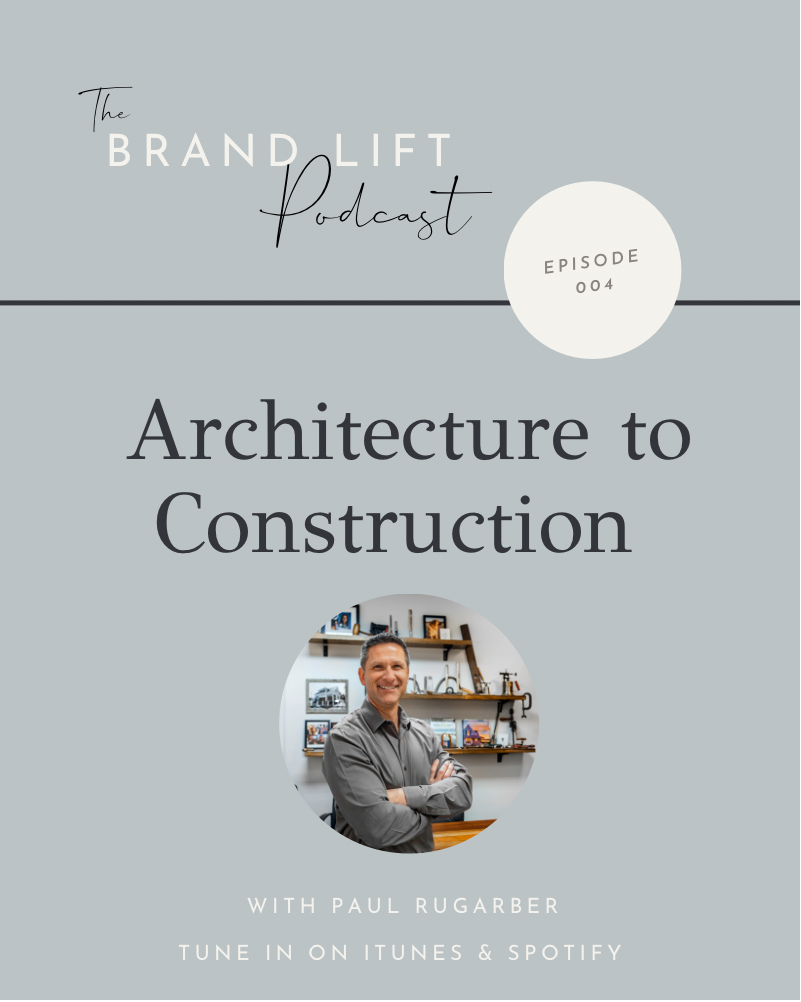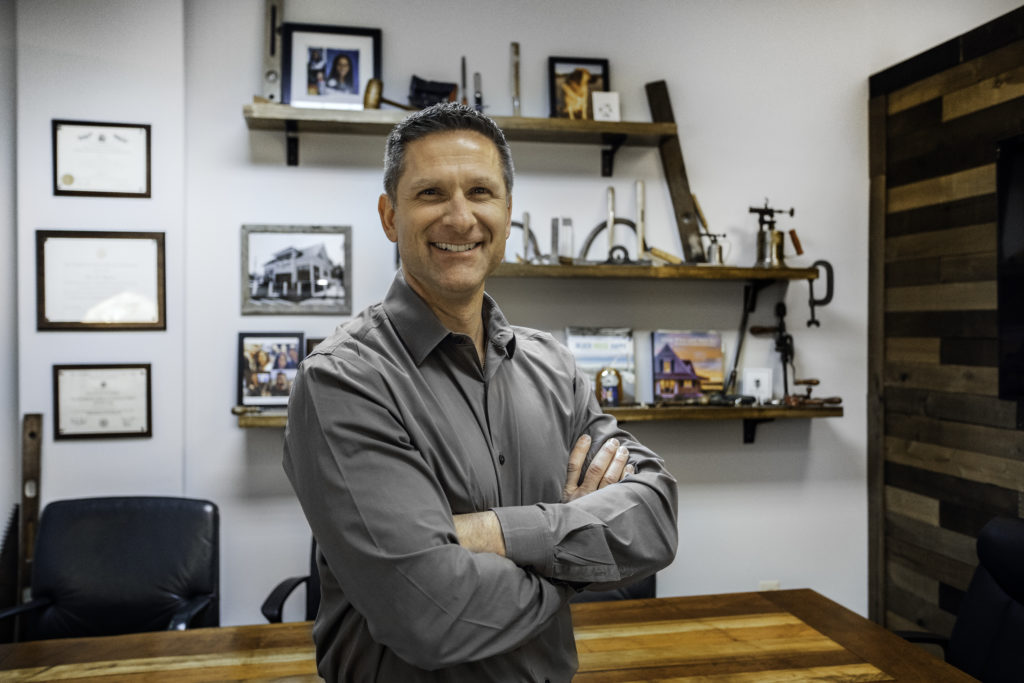Tori Sikkema
Creating visual stories for distinguished architects and designers—from intentional photography to strategic PR support.
WORK WITH ME
right this way
Architecture to Construction
Tips to help homeowners navigate the building process.

Have you ever thought about building your dream home or renovating or remodeling your existing home? Well, statistics show that homeowners will continue to build remodel or renovate their homes well into 2022 and beyond. Having the proper tools to navigate the process and the right team of experts working in collaboration for a positive outcome is critical.
This week’s guest, Paul David Rugarber, grew up around tools and the smell of sawdust from his grandfather’s garage and his father’s remodeling business, which instilled in Paul the love of construction and inspired him to become an architect. Paul now owns PDR Designs an Architectural Firm.
Specializing in guiding homeowners through the process of residential design and construction along the jersey shore since 2008, Paul is a registered architect in New Jersey, New York, and Florida, and a member of the American Institute of Architects. Paul’s passion for others inspired him to write his first book, which was published in December 2017, Architecture to Construction and Everything in Between. The book quickly became an Amazon best seller! It was designed and written for homeowners to answer questions about what to expect during the design and construction process, whether it’s an alteration, addition, or new home build, this book guides clients through the process.
From design to completion Paul’s knowledge and understanding in both the architectural and construction fields have allowed him to continually grow his firm and his influence as a vital leader in the community. Paul Works with habitat for humanity tunnel to towers, and he just finished a project alongside NBC’s George to the Rescue, renovating a wounded warriors veterans basement, which aired in May 2022.
“I like to be in control of my own destiny. I like to kind of break the rules do things differently and be unique. So that’s what I look for now, is the unique projects, the unique clients, something where they appreciate my skill set and what I’m bringing to the table. Then I can do what I want with a project and, you know, how do I satisfy their needs?
Maybe a little bit differently than they were thinking, but in a way that when they come home the end of the day, we tell clients, “I want you to drive up to the house and get like- Ah, I love my house!”. That’s my goal in everything that I design. Is it going to cost you a little bit more for an architect? Yeah, but is it worth it because every day that’s your feeling? Yes.“
TORI: Paul wears a lot of hats as an architect a leader a coach and mentor a speaker and a catalyst within his community. So, your clients come in and you have this incredible book that you wrote, Architecture to Construction and Everything in Between, so when do you introduce this book into the process and how do you encourage your clients to use it?
PAUL: The first thing that we do is they come into the office and I hand them a wrapped copy of a book. We wrap it up in a blueprint paper so it looks artsy and cool and then, you know, that’s a gift I present at the very beginning at a meeting. And I’ll say, “Yeah, so this is a book I wrote. This is what it’s about… this is what it provides to you…”, so it gives me a certain level of expertise, but the expectation, what I tell them, is that the way to use it is, “We’re going to talk about a lot of information here”. We talk about so much information that’s new to people, that they’re just not going to retain it all, so the book walks you through step by step of what to expect.
TORI: Would you say that there’s an overarching main pitfall that homeowners might fall into going through this design construction process?
PAUL: I would say not understanding what they’re getting into. You should have a basic understanding of what it is and be very careful of who you’re entrusting as an advisor to you right?
When you’re investing money, you gotta make sure you know and trust the person that you’re doing that with, whether you’re hiring an architect or a contractor.
You want to make sure at the end of the day that it’s well invested and that you believe that this person is the right one for you, you get along with them, and you’d want to go out and have a drink with them. That’s the kind of relationship you should have, and if you don’t have that, then that’s probably not the right person. You should keep looking.
TORI: I guess since the Pandemic you know this has been an interesting moment in time for so many and I know in the building.
PAUL: You’ve been dealing with supply chain issues and setbacks and restarts. How do you manage those expectations? You know, things beyond the book that are are so unique to the times that we’re living in right now, and how have you been able to navigate your clients through these waters that are so unexpected in our times.
TORI: I want to dive into what I think is my favorite chapter of your book which is: chapter 7, talking about the design process. It really is the creative part, that it’s kind of where I get involved in the process and where what I call the triad of working with your architect, working with your builder, working with your interior designer, and then I come in. I’m really capturing that visual story for all that are involved in the process. You have a wonderful tip, that I love, and I use, and you say that you recommend to your clients to use magazines to get inspirational ideas to incorporate into their home designs. I’d like for you to talk a little bit about this.
PAUL: Design process because it can be overwhelming. There can be so many choices and how do you help your client navigate the process. In the beginning, at our first meeting, we give them a list of design option choices that we’re going to go through, and what we explain to them is that along the way there is a ton of things to think about. But I don’t want to overwhelm them right now with, “Oh my God, you’re going to need to make decisions on roofing, and siding, and trim, and interior trim, and colors, and cabinetry, and countertops, and fixtures.” We say “Here’s a list of things that we’re going to cover as we go through the design process”. So it’s a gradual thing as you go through. We break it down step by step, which is kind of what the book does.
There’s a lot of things, and people underestimate the amount of decisions that go into it, but it’s a fun process.
People sometimes think that each decision they’re making is a life or death, like, “Oh my God, which cabinet knob do I go with? I like this one, and I like this one.” I tell them as long as you have 2 things that you like, probably if you pick either 1 of them, it’s gonna work out good right? You’ve narrowed it down to a couple of selections now, let’s go with your gut and pick one of them, as long as it works into the overall scheme, you’re okay.
Same thing with, you know, wall colors. People get stuck on that and there’s a million different options and shades and does it make a big difference? Yes, but if you’re torn between 2 that are very similar, pick one of them. It’s not life or death. Chances are if you’re looking at 2 of them that you like, either one of them is going to work, so you know, look at it, analyze it, let’s make a decision.
Look at it, analyze it, let’s make a decision.
What I found, is a lot of people have that book understanding of architecture. Maybe they have that design flair, but they don’t understand really what goes into it, how it gets put together, how to solve problems a little bit differently because it’s different when you’re drawing it on paper and there’s a line that you can move around and create. You can do whatever you want with lines on a piece of paper, but when it comes to a real-world built environment, there are certain limitations there and there are certain things that you need to know.
When people come in, I think their expectation is that you know all aspects of it. The reality is that most architects don’t know all aspects of it. We are unique in that way and that does give us an advantage and I think when clients come into the office, you mention all the tools that we have, saws are hanging on the walls, and block planes, and everything that, you know, my father and grandfather had used and I grew up around.

guiding the owner through the process of residential design and construction along the Jersey Shore
since 2008. Paul is a registered architect in NJ, NY, and FL, and a member of the AIA (American Institute
of Architects).
Listen to learn more about how Paul got started, what drives his passion and what his thought are on building during the pandemic and more tips to help homeowners navigate the building process.
Leave a Reply Cancel reply
Master the Path to Publication
sign up for our masterclass
Discover the proven framework Tori uses to help designers secure features in leading publications. Learn how to present your work, pitch with confidence, and attract editorial attention.
become an expert today
website and branding by courtney lynette
Terms and Conditions
Privacy Policy
Contact
about
Home
Services
Portfolio
blog
Creating visual stories for distinguished architects and designers—from intentional photography to strategic PR support. Serving the NY metropolitan area and beyond.